
You see the throngs of people standing between you and the ride. You aren’t worried, though. You have an advantage that they don’t.
You confidently approach the line, but you veer at the last moment. The regular entrance is for the ordinary people. You’re one of the chosen few. You even enjoy your own park attendant. You walk up to a Cast Member, and they look at you expectantly. Authoritatively, you raise your arm to show that you belong. With a nod of recognition, the employee confirms that you are a member of the elite. The theme park’s version of the velvet rope lifts, and you enter the much shorter line, for you have…a FastPass!
In that moment, you are the chosen royalty of the Happiest Place on Earth.
In 1999, the geniuses at Disney finally recognized that their exponential growth rate had an unfortunate consequence. Eventually, the lines at their park attractions would grow so long that they would discourage guests from visiting. In order to adapt to this situation, the company’s world-renowned Imagineers crafted a clever solution. They would add secondary lines to their most popular rides and character experiences. The park’s system would control the number of times a guest could enter the second, much shorter line.
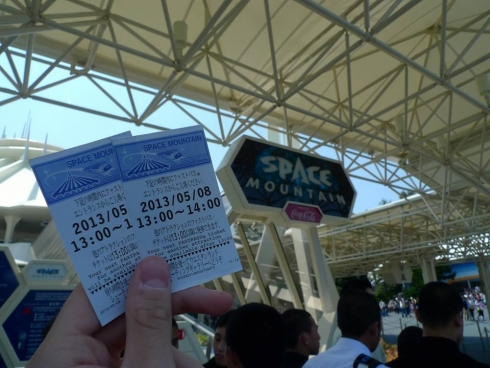
By allowing a few such FastPass usages each visit, Disney guaranteed their visitors would enjoy all their favorite parts of the various theme parks without having to fight the crowd. If you’ve spent any time at one of Disney’s iconic theme parks over the past 16 years, you’ve utilized a FastPass at some point. Have you ever taken a moment to consider how it came into existence or works so cleverly, though?
Let's take a deep dive to learn about the genesis of the FastPass, its evolution across multiple Disney parks throughout the world, and its latest phase as FastPass+.
A growing need…
The first aspect to consider regarding the invention of the FastPass is its purpose. During the late 1990s, the most common complaint Disney received in feedback from guests was wasted time. Rather than enjoying all the restaurants, shops, shows, and attractions available at a theme park, guests across the world vented that they spent far too long stuck waiting in line. Their problem was also Disney’s problem, because people standing in a queue aren’t people buying food, drinks, or souvenirs, which cost Disney tens of thousands of dollars per minute.
In order to alleviate this issue, Imagineers needed a solution that would lessen time spent in line. This puzzle was trickier to crack than you may think. After all, anything they offered to shorten the customer’s wait must be available to everyone. That’s a vicious circle, because the new option would quickly become as congested as the old one. Plus, the idea of adding a second line seemed particularly counterintuitive. All that should accomplish in theory is giving people a different waiting queue. The same park guests are still in the same two lines, making the crowd levels for the attraction identical. So, what’s the enhancement?
The solution was an elegantly simple: design a pass-based system that empowered guests with the ability to virtually wait in line for an attraction without physically doing so. It’s the equivalent of calling for an imaginary baserunner in a backyard baseball game. Getting such a revolutionary process off the ground, however, was not an easy endeavor.
A new tomorrow
1998's attendance report was grim. Disneyland, the American original, claimed 13.68 million in attendance in 1998, which was a troublesome decline of 4 percent from 1997. Walt Disney World’s Magic Kingdom, the most popular theme park in the world, suffered an even stiffer decline of 8 percent to 15.64 million. Epcot and what was then known as Disney-MGM Studios both experienced 10 percent falls to 10.6 million and 9.47 million, respectively. While there are always a multitude of reasons when park attendance fluctuates from year to year, Disney execs had cause for alarm with their 1998 numbers.
With guests telling them that giant attraction queues were a deterrent and park visits dropping at an alarming rate, the company prioritized crowd control solutions. The idea of a velvet rope kind of second line, while daring, fell into place once the Imagineers determined the mechanics.
One of the issues Disney Company has with developing new technologies is how to roll them out in the various parks across the world. The locations all operate differently, so a single concept requires variance and nuance across the distinct facilities. Company employees like to say that the sun never sets on the Disney Empire, a play on historical maxim used for the British and Spanish empires as well as the holdings of Xerxes I of Persia.
Disney never needed to act like bloodthirsty conquistadors to claim their territories. The locals warmly welcomed each invasion, but a change as all-encompassing as a new theme park queue system required a lighter touch. Corporate executives plotted the introduction of FastPass in combination with their most ambitious theme park to date, Animal Kingdom.
Still the world’s largest theme park, the expansive offerings at Animal Kingdom required a new type of thinking by Disney’s Imagineers. In 1998, the company boldly announced the intention to open a new park at each of its existing properties over the next five years. To alleviate the ambition of this goal, they calculated that FastPass would solve the organic crowd concerns at each new location.
Animal Kingdom became the trial run just over a year after its 1998 debut. In July of 1999, the park added a series of kiosks. People with daily tickets or annual passes to Animal Kingdom could approach these FastPass distribution machines, sticking their admission ticket into the designated slot, and then recieving a paper FastPass with a return time.
The system assigned the user with an hour-long window for a ride return later in the day. The only information the paper showed in 1999 was the attraction of choice and the FastPass timeframe. The more advanced data wouldn’t appear for years, when the company acknowledged that there were flaws in the system that they should address by evolving the actual FastPass. Once the guest reached the attraction, a sign reflected the current FastPass printout window. Nearby was another sign displaying the current average waiting period for staying in the standard queue. The belief was that by showing the comparison information, Disney consumers would adopt the new system quickly.
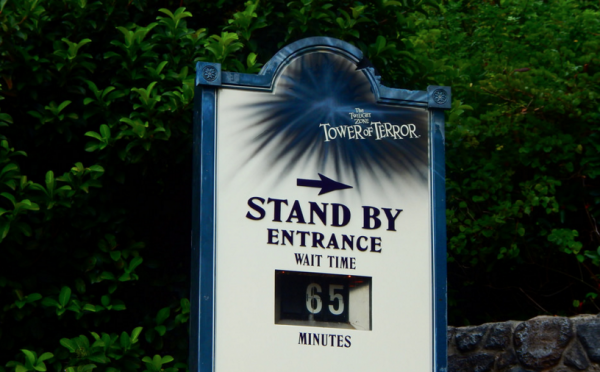
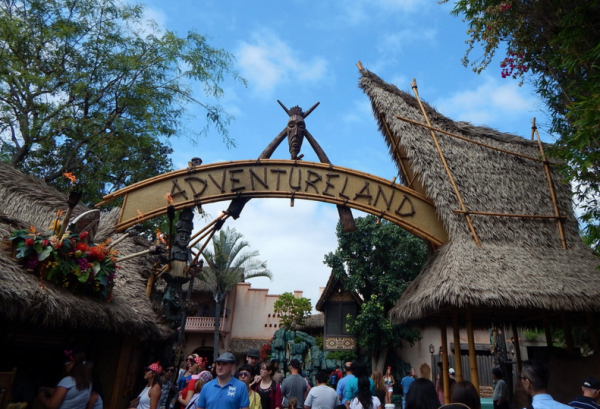
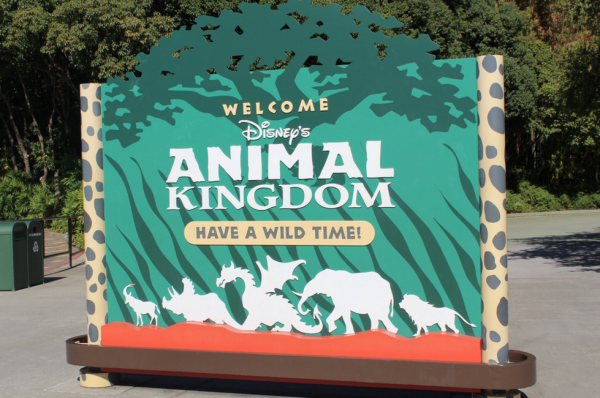
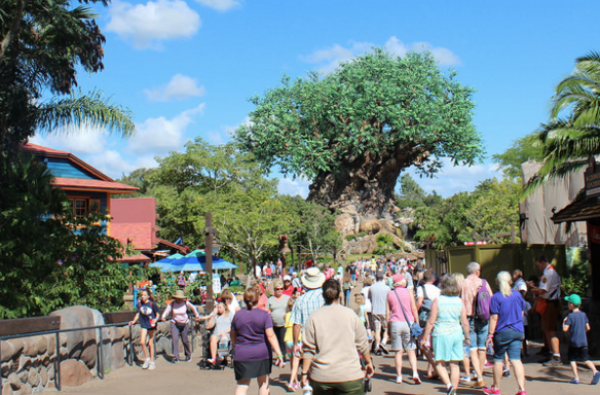

Comments
If you let the website or app choose your FastPasses, there's nothing random about it. It will always set your FastPasses times so that you're going clockwise or counterclockwise in the park to prevent you from backtracking your steps. The problem comes when you may have made a reservation for a restaurant off the path or you decide to change the land you're in between FastPasses.
And, yes, abuse of the old FP system was a problem. There were Guests who even knew about a lever that could be pressed in the back of the FP machine to print tickets during maintenance. You'd be amazed at what the security cameras hidden in plain sight will show Guests doing when they think no one is watching.
Fraud is a huge issue at Disney that MyMagic+ is solving. Why do you think you can't make double/triple book dining reservations and have to put a credit card on the reservation? Or why does Cinderella Royal Table require the name on the credit card match the name on the reservation along with ID verification, or that paper admission tickets are no longer used? What people consider minor violations extrapolated out hundreds of thousands of times over the course of weeks/month/years turns into thousands of fellow Guests inconvenienced and potentially hundreds of thousands of dollars lost by Disney.
All this to say that Disney has turned it's back on the day visitors, likely Florida residents, who at one time were needed to keep the Disney parks full(er) during the tougher times. Now, many who decide to visit the park for a day, randomly, usually cannot even get a Fastpass for any of the Tier 1 attractions.
While I understand that Disney wants to cater to the $10K - $15K per week families who come from abroad or within the US, it's a slap in the face to those who would visit more regularly throughout the year, but on a day-to-day basis.
Shame on all of Disney for shunning the loyal Disney-goers, have stood by the parks from the beginning.
"Progress" isn't always progress.
Actually, Disney has taken day Guests into account. Most people don't realize that the availability of FastPasses open up at midnight on the 60-day mark for resort Guests for a limited number of passes so that there will still be some left at the 30-day mark for off-property Guests. The next set of FastPasses are released on the day of for day Guests who may not have planned up to 30 days in advance. In theory, you should still be able to get a FastPass for Toy Story Midway Mania at midnight the day you want to go to the park, but savvy people in the know usually would have taken the remaining passes by the time the park opens.
In short, Florida residents haven't been overlooked. It's just more than 60 percent of Guests are now using the system rather than 30 percent. As a local, you still have an advantage over most Guests because you're not spending $10k on tickets, food and lodging to go to the most magical place on Earth on a whim.
As a over 65 grandparent, the 'fast pass' system greatly reduces my grouch factor according to the wife and daughters.More importantly though, the evolving data system allowing adding passes via smartphone as well as checking real time wait times is real plus. The grandsons range in age from 4 to 9. We can split the 2 older ones from the younger and utilize passes for one pair while taking the others to a relatively short line.The addition of a park hopping capability for the FastPass+ system would really enhance the total experience.
Slightly off subject, the dining data base has been good for us and WDW.At least three times during our last two visits, a last minute res. spot has shown up at a favorite restaurant (two of those character meals). Win- win.
At first I really likes My magic +. However, this year I rode less rides than ever and wasn't happy about it. Granted it was very busy this past June, but some rides such as Rock n Roller coaster I didn't even get on this year, do to fastpass rules. I scheduled all my fastpasses early in the day each day, and did my best to get more at kiosks after they were used, and most often everything was gone I wanted a fastpass for. Very disheartening.